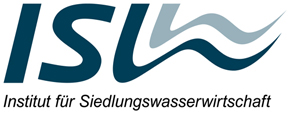
Lars Günther
Full Scale Nutrient Recycling and Polltant Elimination from Municipal Sewage Sludge
Abstract
Phosphorous is an essential and non-substitutable nutrient. The global resources are estimated to last for another 130 years only. For this reason it is necessary to recycle this nutrient even from municipal sewage sludge.
Up to now the use of nutrients from sewage sludge has been carried out via agricul-tural applications. However, sewage sludge also contains pollutants, so that the ex-pected lowering of limiting values by the legislation is likely to make the direct utiliza-tion in this form difficult. In order to ensure the use of nutrients and to extend an al-ternative way of sewage sludge disposal to the operators of waste-water treatment plants, the seaborne-technology was invented. This Technology allows the separation of pollutants and a simultaneous nutrient-recycling from municipal sewage sludge. A pilot plant in the dimension of 10,000 PE was built in Owschlag (Schleswig-Holstein). The first large-scale unit was established in a modified way at the waste-water treatment plant (WWTP) in Gifhorn (56,000 PE, Lower Saxony).
In the Seaborne-Process the sewage sludge is treated in three steps. First, the nutri-ents and heavy metals are dissolved by a decline in pH-value from pH 7 to pH 2. Secondly, the pH-value is raised up to pH 4.5 for a separate precipitation of heavy metals by using sodium sulfide. These two steps are called Removal of Heavy Metal (RoHM-unit). In a third step phosphorous and nitrogen are precipitated by adding magnesium hydroxide and raising the pH-value up to pH 8.7. This unit is called Nutri-ent Recycling System (NRS 1). In a final step excess nitrogen is recovered by an ammonia stripping technology (NRS 2).
The precipitation products are the fertilizing compounds magnesium-ammonium-phosphate and ammonium sulfate, as well as highly concentrated heavy metal sludge and ash.
Experiences with large scale practicability and suitability for P-recovery of the Sea-borne-technology are still limited. It is the aim of the present study to investigate the effects of the Seaborne-technology to the wastewater and sewage sludge treatment of a municipal wastewater treatment plant. To this end the mass balances of nutrients and heavy metals were ascertained at the pilot plant and later verified at a large-scale WWTP with the dimensions of the WWTP Gifhorn. Results obtained at the pilot plant in combination with those from additional lab tests were used to optimize the procedure.
Mass balance results show that in this case about 41 % of nitrogen and 33 % of phosphorous can be recycled from sewage sludge by using the Seaborne-Process. Based on the WWTP influent nutrient load 32 % of phosphorous or a daily load of 29 kg PO4-P can be recovered at the WWTP Gifhorn. Twenty-six percent of the phos-phorous that is lost is localized in the separated solids after acidification and 34 % are lost due to the heavy metal precipitation. In order to optimize the recovery of phosphorous, these losses have to be prevented.
In lab-scale test it was shown that the retention time in the acidification can possibly be reduced. Furthermore it could be determined that the hydrogen peroxide dosage in the acidification has only marginal effects on the solubility of heavy metal. Instead, it might have the undesired consequences of untimely phosphorous precipitation. Therefore, these two reaction steps have to be adjusted.
The right dosage of, for example, oxalic acid in the RoHM-unit can cause metal oxa-late to precipitate thereby avoiding the precipitation of metal phosphate in the nutrient removal unit. This raises the amount of recyclable phosphorous and optimizes the quality of the fertilizer. In addition, it inhibits an incrustration in the ammonia stripping.
A WWTP dimensioning before and after adding the seaborne-technology to the exist-ing treatment shows the effects of the seaborne-technology on the WWTP operation. As a result of the lower nutrient concentration in the recirculation a lower waste acti-vated sludge production, a smaller biological volume as well as a reduced aeration is expected. Also, a reduction of costs for precipitants used in the phosphorous-elimination is feasible.
The energy balance results show an energy increase of 37 % after implementation of the Seaborne-technology. At the WWTP Gifhorn this increase can be covered by the simultaneous co-fermentation of grease. In any case, the reduction of the energy demand should be the aim of further optimizations.
In summary, the first large-scale seaborne-technology is an important step for re-search to get practical experience and information about p-recycling from municipal sewage sludge. Nutrient and pollutant mass balances will help to identify the potential for optimizations in the procedure which are aimed at maximizing the precipitation of heavy metals and the amount of phosphorous that is recycled.
Vacancies of TU Braunschweig
Career Service' Job Exchange
Merchandising
Term Dates
Courses
Degree Programmes
Information for Freshman
TUCard
Technische Universität Braunschweig
Universitätsplatz 2
38106 Braunschweig
P. O. Box: 38092 Braunschweig
GERMANY
Phone: +49 (0) 531 391-0
